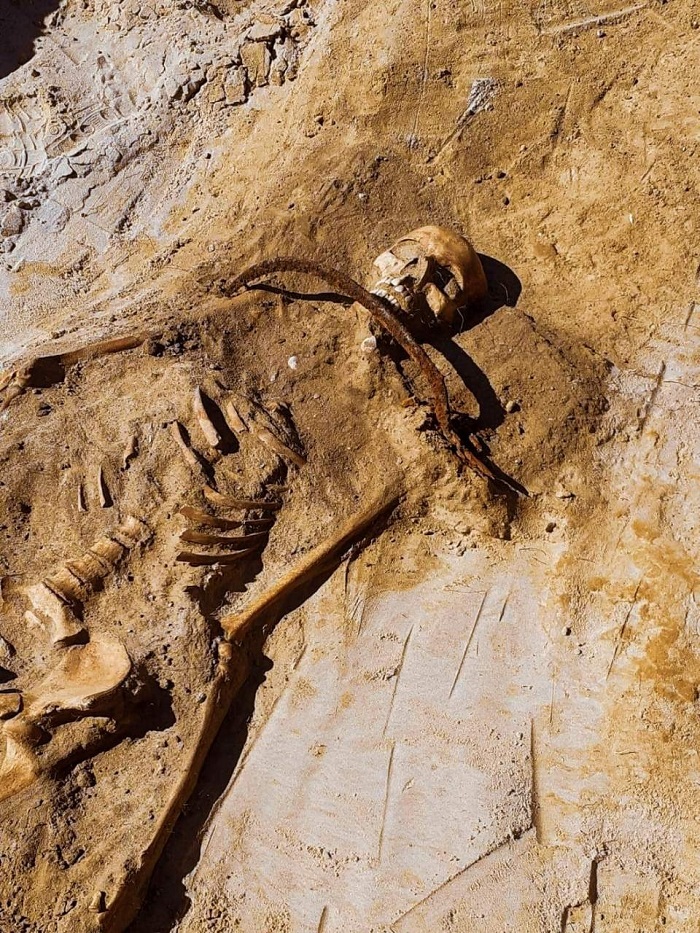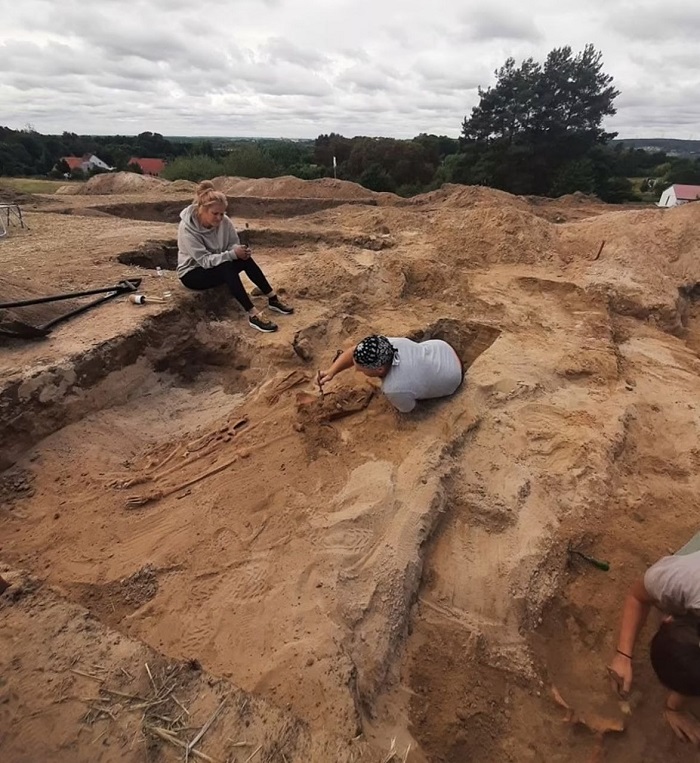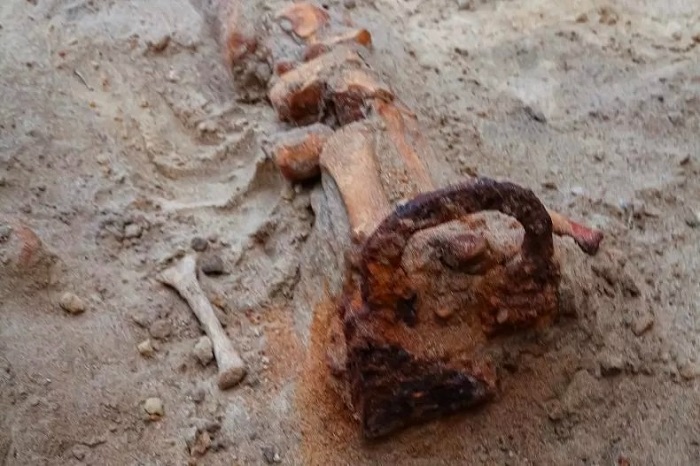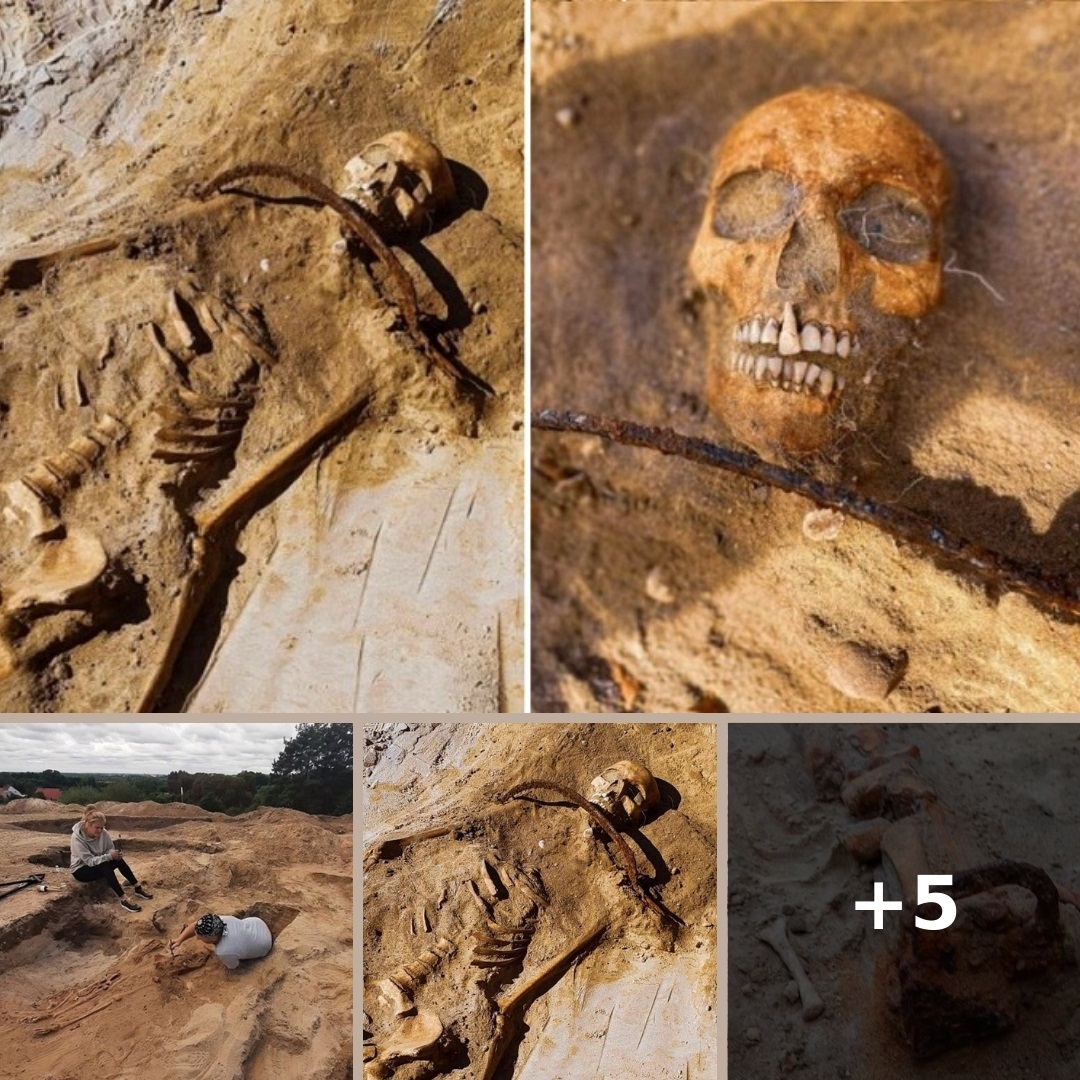In 2022, the skeleton of a young woman once suspected of being a “vampire” was unearthed by archaeologists in Poland. Her body was discovered in a 17th-century graveyard, with an iron sickle around her neck and a triangular padlock on her big toe, supposedly to prevent her from wreaking havoc from beyond the grave.
The belief in vampires and the undead has fascinated people for centuries. Legends and lore have been passed down from generation to generation, and many people still hold strong beliefs in the existence of vampires.
The discovery of a 17th-century graveyard in the village of Pień in Poland has sparked interest in the subject. The graveyard was originally excavated from 2005 to 2009, but a 2022 survey uncovered more graves, one of which archaeologists described as “sensational” and particularly unique.

A skeleton of a woman believed to have been buried with a thin metal sickle around her neck to prevent her from returning from the dead has been discovered by Professor Dariusz Poliński and his team from the Archaeology Institute of Nicolaus Copernicus University.
Vampires and other supernatural creatures have plagued the imaginations of people across Europe for centuries. According to the Scientific American, certain diseases resulting in extreme psychological and behavioral changes like schizophrenia, rabies, and tuberculosis, sparked fears in other villagers that the sick person may be dangerous, and when they died, they may return.
According to Poliński, the strange burial was performed because the villagers may have thought that the woman was undead.

Researchers found the sickle placed on the neck in such a way that if the deceased had tried to get up most likely the head would have been cut off or injured. The padlocked big toe also possibly symbolized “the closing of a stage and the impossibility of returning,” stated the lead researcher Dariusz Poliński.
When they were buried, they were often restrained or damaged in some way to prevent them from rising from the grave. Ways to protect against the return of the dead include cutting off the head or legs, placing the deceased face down to bite into the ground, burning them, and smashing them with a stone.
However, the young woman found in Pień was treated with respect in comparison to women at the time who were accused of having supernatural powers. According to Poliński and his team, she was neither ritually murdered nor was she one of the convicted in a witchcraft trial. Those individuals were treated differently and, usually, they were thrown into provisional graves, eg. at the gallows.

One hypothesis that Poliński and his team have about the woman is that the locals may have feared that she would somehow try to get her revenge. It is possible that in her lifetime the woman experienced a tragedy and was harmed. On the other hand, her appearance or behavior might have provoked the contemporary residents to be afraid of her, but this can only be proved by further research on the skeleton.
The 17th century was an era when people believed in vampires and other supernatural creatures. In the case of this enigmatical grave in Pień, there are more questions than answers. More studies, however, may help to identify the cause of this young woman’s death.
Other skeletons buried in a similar way have previously been found in Poland. In 2014, archaeologists discovered five skeletons with sickles around their necks in a cemetery in Drawsko, around 150 miles away from Pień, as published in the journal Plos One. In four of these skeletons, the sickles were placed on the throats of the bodies, and up against the pelvis of a fifth.

According to a 2014 study published in the journal Antiquity, burials that are marked by the inclusion of unusual items, or where the bodies have been placed in peculiar positions – particularly where they have been mutilated or dismembered – are often viewed as evidence for ‘anti-vampiric’ practices or simply as the graves of ‘vampires’.
The findings of Professor Dariusz Poliński and his team shed new light on centuries-old beliefs and folklore surrounding vampires, its not only intriguing to archaeologists and historians but also to the general public as it offers a glimpse into a world beyond our own.
It is incredible to see how people used to deal with the supernatural and how their fears materialized in their burial practices.

